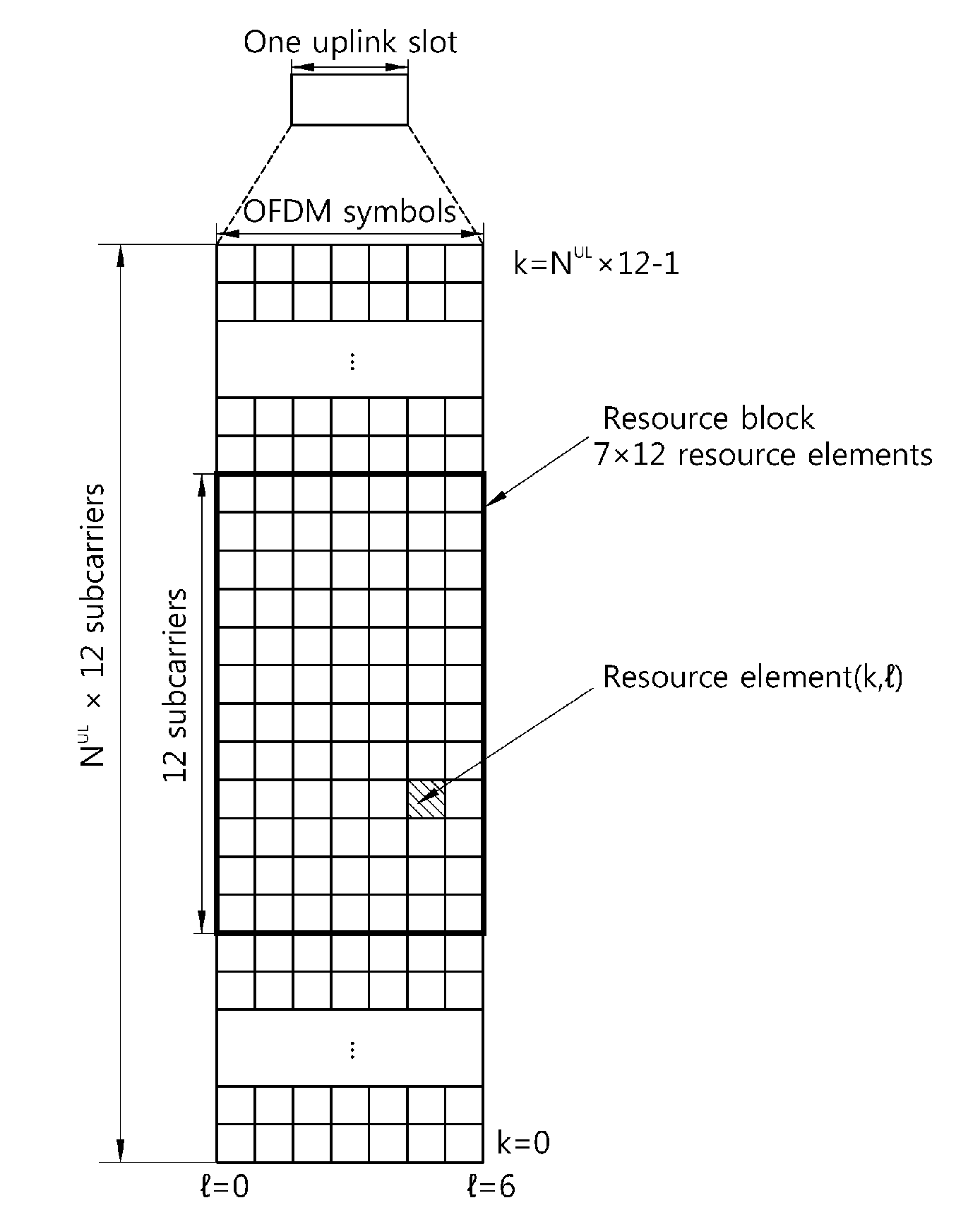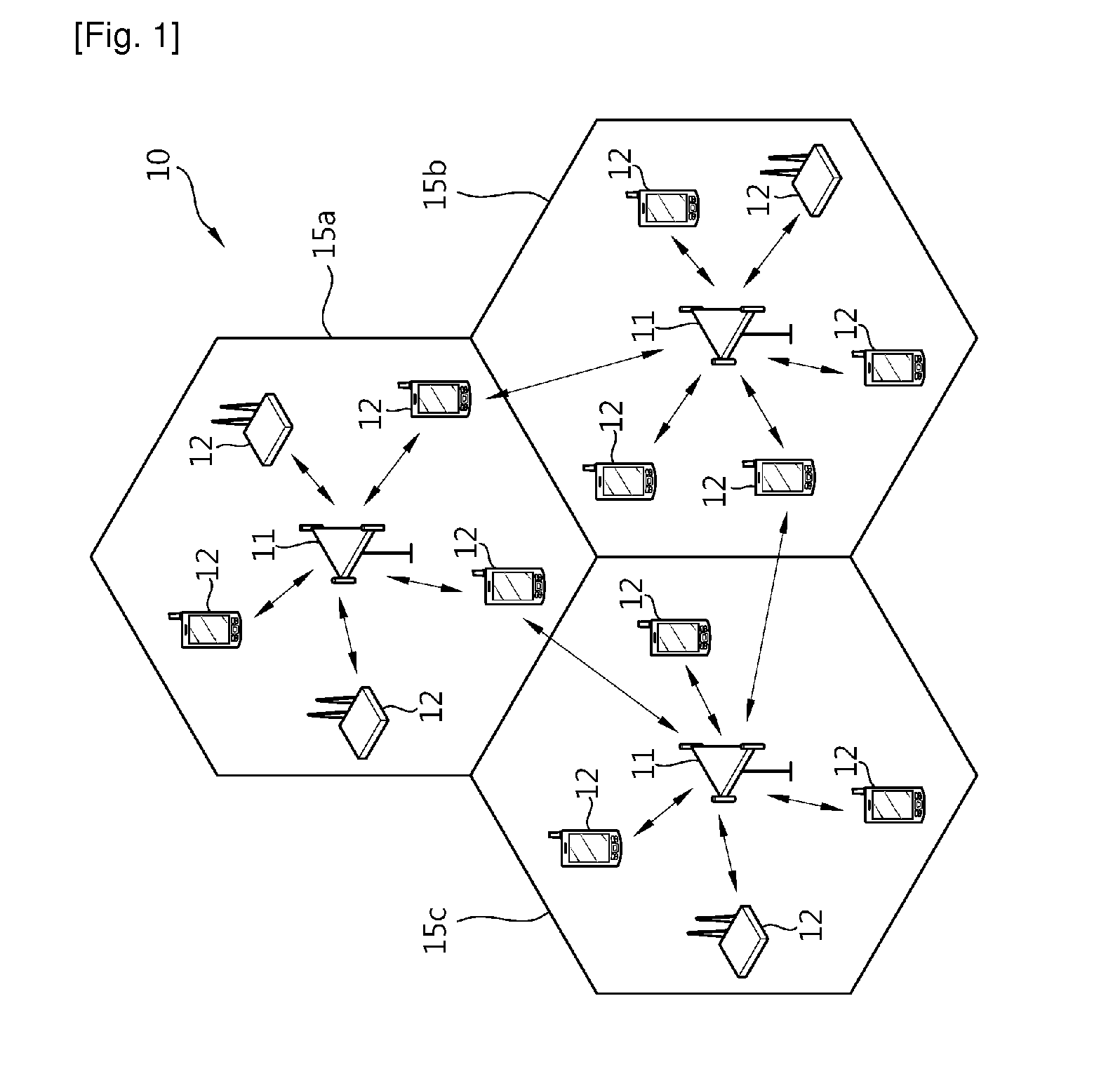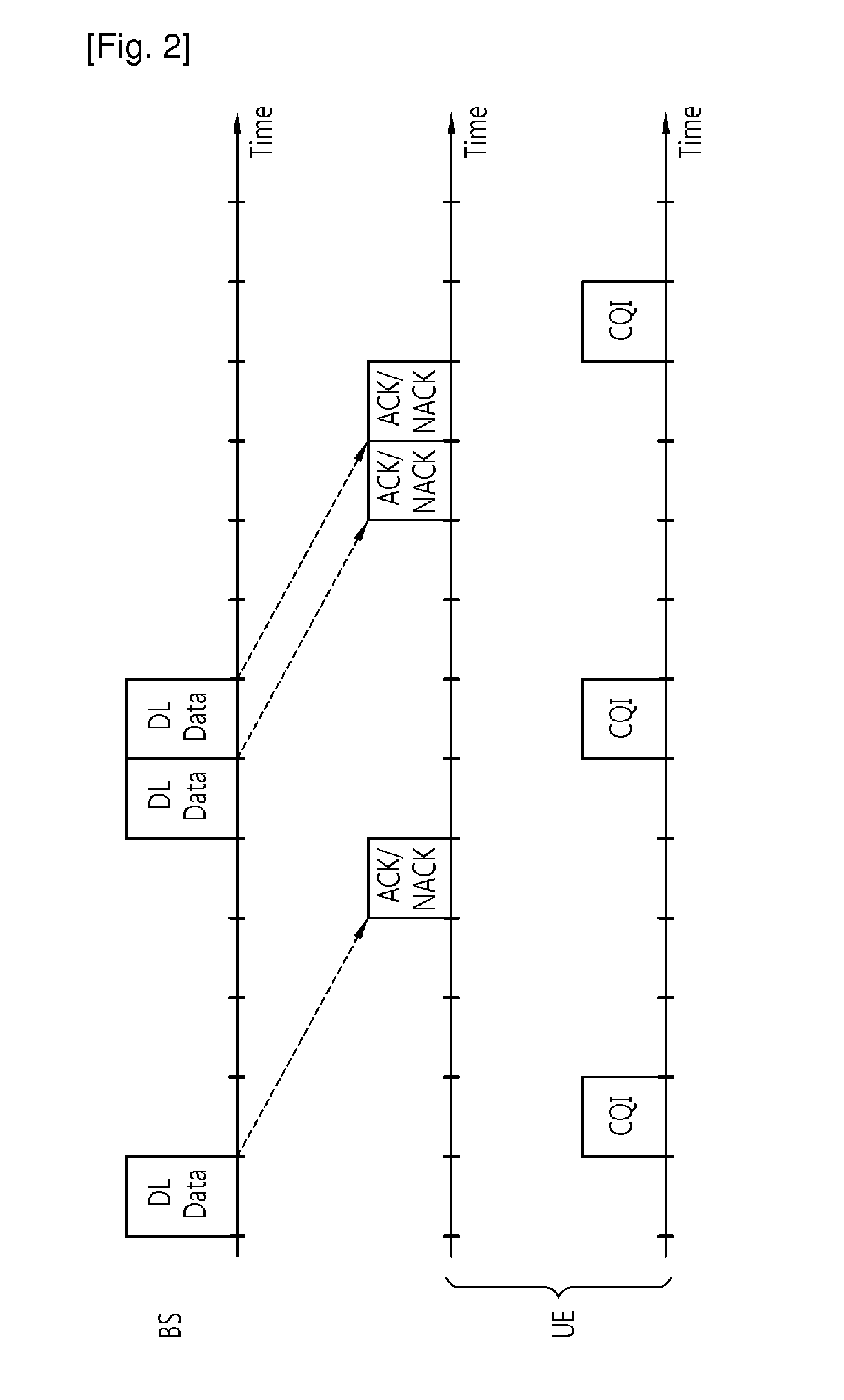Method and apparatus of transmitting information in wireless communication system
- Summary
- Abstract
- Description
- Claims
- Application Information
AI Technical Summary
Benefits of technology
Problems solved by technology
Method used
Image
Examples
first exemplary embodiment
1. First Exemplary Embodiment
[0206]In the first exemplary embodiment, a Walsh-Hadamard matrix is used as the OS.
[0207]The following equation represents a 4×4 Walsh-Hadamard matrix:
MathFigure14[11111-11-111-1-11-1-11][Math.14]
[0208]Each of the four rows of the Walsh-Hadamard matrix constitutes OSs in which they are mutually orthogonal. Namely, four OSs such as [1, 1, 1, 1], [1, −1, 1, −1], [1, 1, −1, −1], and [1, −1, −1, 1] may be defined. In the 3GPP LTE, the three OSs excluding [1, −1, −1, 1] are used (See Table 3), but [1, −1, −1, 1] can be also used as the OS.
[0209]The case where R=2, a first OS is [1, −1, 1, −1], and a second OS is [1, 1, −1, −1] will now be taken as an example.
[0210]The first spread sequence becomes [d(0), −d(0), d(0), −d(0)], the second spread sequence becomes [d(0), d(0), −d(0), −d(0)]. If reception signal is y=[y(0), y(1), y(2), y(3)], the reception signal may be represented by the following equation.
MathFigure 15
y(0)=d(0)h1+d(0)h2+n(0)
y(1)=−d(0)h1+d(0)h2+n(...
second exemplary embodiment
2. Second Exemplary Embodiment
[0214]In the second exemplary embodiment, a discrete Fourier transform (DFT) code is used as an OS. The use of the DFT code is equivalent to a cyclic shift of another domain. Namely, the use of the DFT code in the time domain is equivalent to the cyclic shift in the frequency domain. Otherwise, the use of the DFT code in the frequency domain is equivalent to the cyclic shift in the time domain.
[0215]The following equation represents a 4×4 DFT code matrix.
MathFigure18[1j2π·1·0 / 4j2π·2·0 / 4j2π·3·0 / 41j2π·1·1 / 4j2π·2·1 / 4j2π·3·1 / 41j2π·1·2 / 4j2π·2·2 / 4j2π·3·2 / 41j2π·1·3 / 4j2π·2·3 / 4j2π·3·3 / 4][Math.18]
[0216]Each of the four rows of the DFT code matrix constitutes OSs in which they are mutually orthogonal. Namely, four OSs having a length of 4 may be defined from the DFT code matrix.
[0217]The case where R=2, a first OS is w1, and a second OS is w2 as represented by the following equation will be taken as an example.
MathFigure 19
w1=[1, ej2π·1·1 / 4, ej2π·2·1 / 4, ej2π·3·1 / 4...
third exemplary embodiment
3. Third Exemplary Embodiment
[0222]In the third exemplary embodiment, a resource used for information transmission includes an OS and the amount of CS. In this case, a resource index indicates an OS index and a CS index.
[0223]The rth spread sequence generated by using the rth resource index may be represented as two-dimensional time-frequency domain as represented by the following equation.
MathFigure23[zr(0,0)zr(0,1)zr(0,2)zr(0,3)zr(1,0)zr(1,1)zr(1,2)zr(1,3)⋮⋮⋮⋮zr(11,0)zr(11,1)zr(11,2)zr(11,3)][Math.23]
[0224]Here, each row may correspond to a subcarrier, and each column may correspond to an OFDM symbol. Each element of the matrix may be mapped to resource elements of RBs used for information transmission. Here, the matrix includes 12 rows and four columns, but it is merely illustrative and the number of rows and columns is not limited.
[0225]FIG. 19 shows an example of a single RB to which the rth spread sequence is mapped.
[0226]Referring to FIG. 19, the RB includes a slot (7 OFDM sy...
PUM
 Login to View More
Login to View More Abstract
Description
Claims
Application Information
 Login to View More
Login to View More - R&D
- Intellectual Property
- Life Sciences
- Materials
- Tech Scout
- Unparalleled Data Quality
- Higher Quality Content
- 60% Fewer Hallucinations
Browse by: Latest US Patents, China's latest patents, Technical Efficacy Thesaurus, Application Domain, Technology Topic, Popular Technical Reports.
© 2025 PatSnap. All rights reserved.Legal|Privacy policy|Modern Slavery Act Transparency Statement|Sitemap|About US| Contact US: help@patsnap.com



